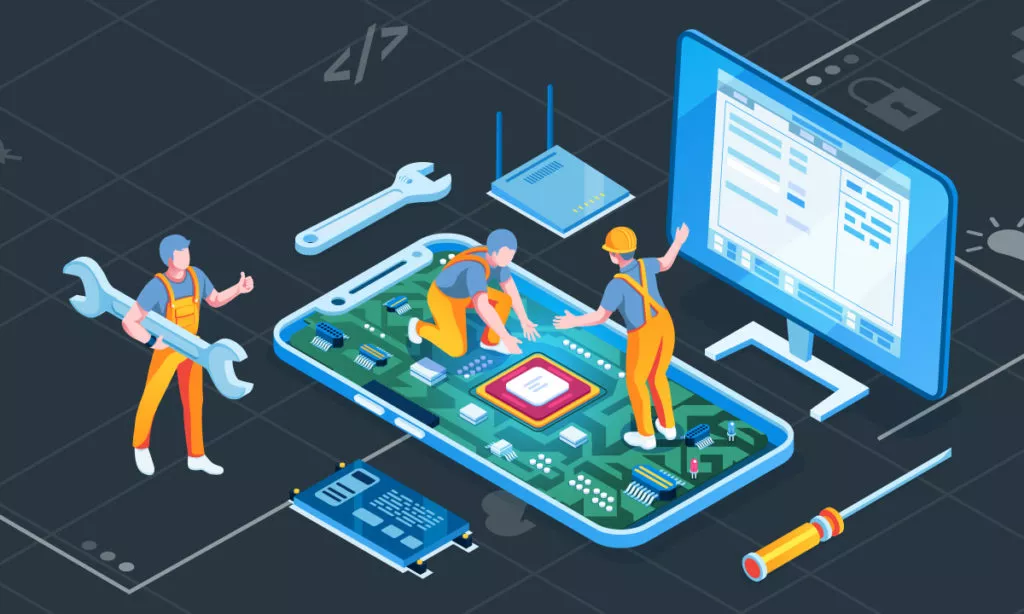What Is Software Maintenance?
Software updates are a necessary part of keeping things up, running, and secure. That can mean things like bug fixes, improving compatibility for new hardware/software releases, and performance.
Methods of maintenance can be mixed to improve the long-term success of software. In this article we are going to look at 4 common types of software maintenance.
Adaptive Maintenance
Adaptive maintenance involves changes to the software systems in an environment that’s changing (hardware, operating system, etc) or new features or usability for better user experience. It can also mean adaptation to allow new features or make it usable for better experiences.
In case of new mortgage product, VAT rates, for example; they need to incorporate this in their system as well. Legislation or rules may also need changing since it affects the operations of a business.
Flexible maintenance of software systems is crucial as they’re meant to deliver for the long haul. Unfortunately, however, it can be costly and technical skills which aren’t always at hand in an organization. And even changes made during this cycle can accidentally create bugs that need to be fixed and tested again.
Perfective Maintenance
Whether that is by developing new functionality or changing functionality to better address customers’ demands and changing technologies, software systems have to evolve in parallel with their users.
Perfective maintenance refers to tuning your software infrastructure with actions you make that optimise your software infrastructure without affecting its functionality. This is designed to enrich users’ interactions and make them easier, accessible, and enjoyable for their usage of your product or service.
Adaptive maintenance means updating software platforms to react to changing environments, whether it is new hardware or external services. It also handles the defects that are not a risk now, but could be one day.
Corrective maintenance involves getting the problems corrected quickly and effectively, as soon as they occur, and fix them quickly to reduce downtime and stop bigger issues from escalating. Just like a monthly auto service keeps your vehicle in good shape, preventive maintenance helps users trust and use your software – and keeps your company at the top of your market.
Preventive Maintenance
Preventive maintenance plans are an ongoing way to check, service and repair devices or facilities to reduce the risk of surprises and repairs. They are cleaning, lubricating and repairing to avoid breakdowns or unexpected shutdowns.
Having big asset inventories can make planning and managing preventative maintenance difficult for companies. This can be overcome by proactive maintenance software that centralises work orders, streamlines workflow and automated scheduling on a broad array of assets.
Maintenance programs prevent unexpected repair expenses, time-tradition labour for meeting the deadline and low productivity. A robust preventive maintenance strategy will extend asset life, increase safety and improve the quality of production – and a powerful computerized MMS like MaintainX might be the perfect way to digitally generate and track work orders, automate workflow and get feedback on how the asset is performing.
Corrective Maintenance
Corrective maintenance is the fix of faults found in the way software systems work every day, such as fixing a broken machine or repairing worn out components, or by upgrading systems to eliminate bugs discovered by users.
Corrective maintenance is also what you do when user feedback suggests dark mode should be enabled on your site or app, or something was never part of the original design. Adding functions is corrective maintenance action either way.
Executing these steps can cost a fortune when they’re done by the numbers and you’re in a bind, but with a CMMS, you can minimize the amount you spend by ensuring the right people are properly trained and monitoring team progress and team training – particularly important if your organization makes use of tools or equipment like inspection software to perform a measurement or excavation safety services.



